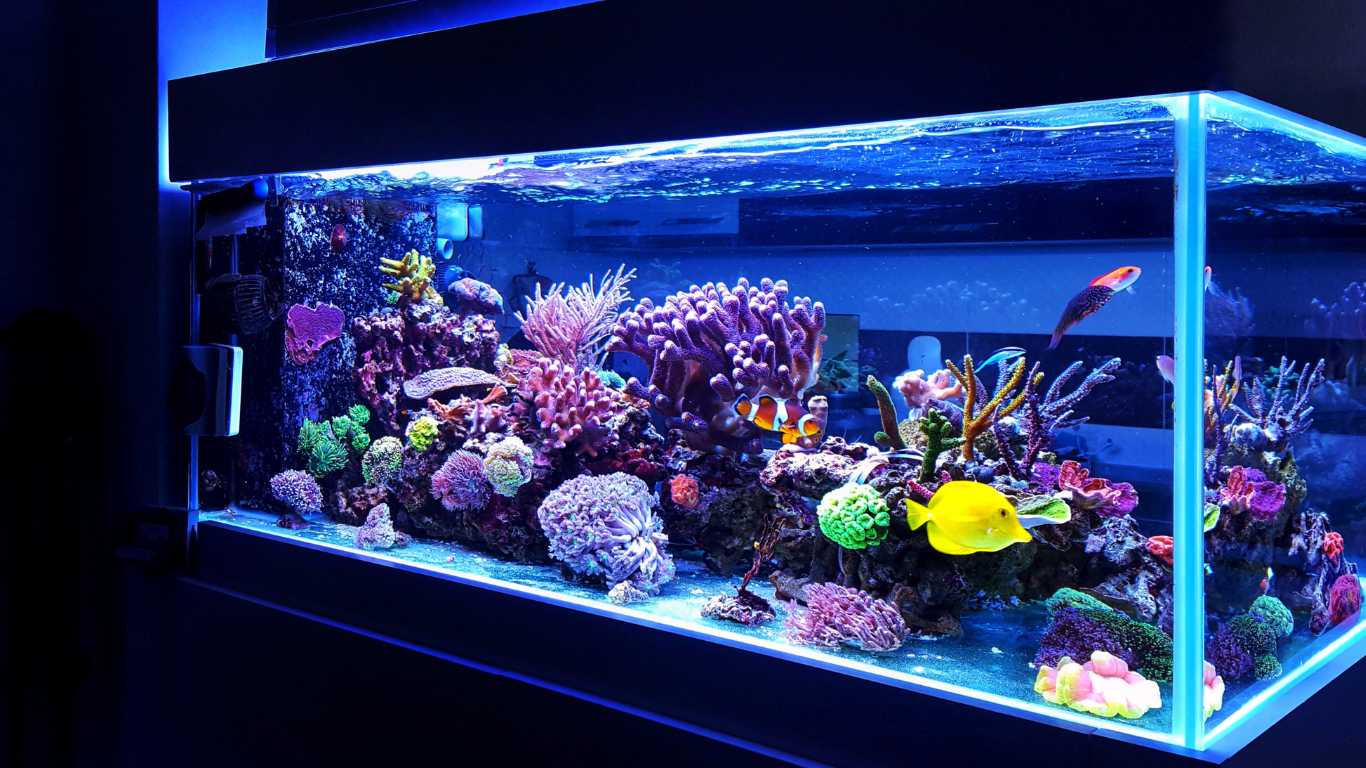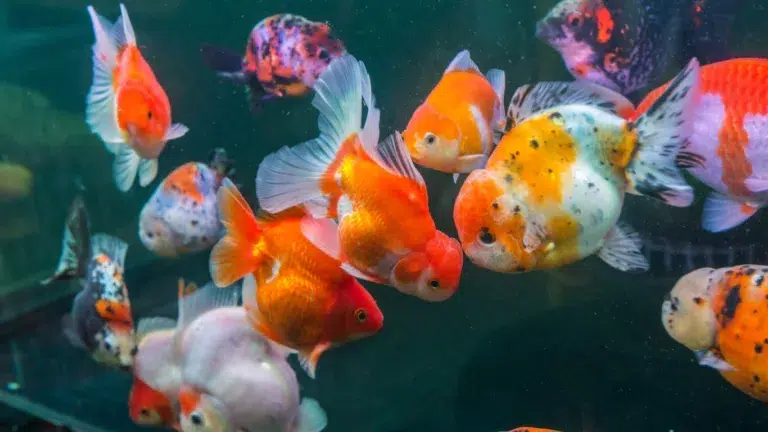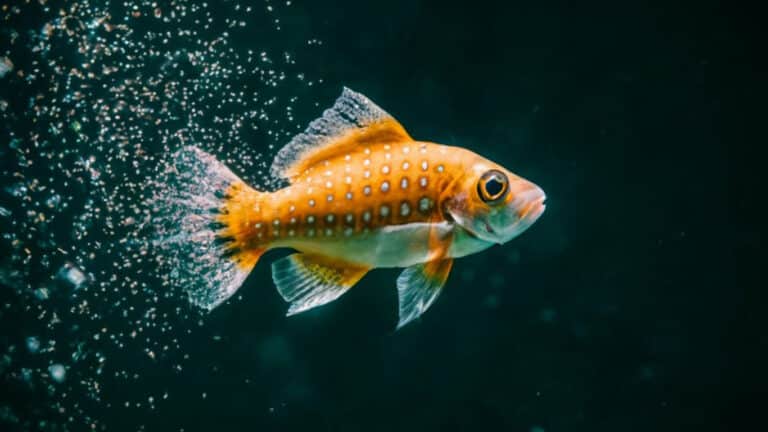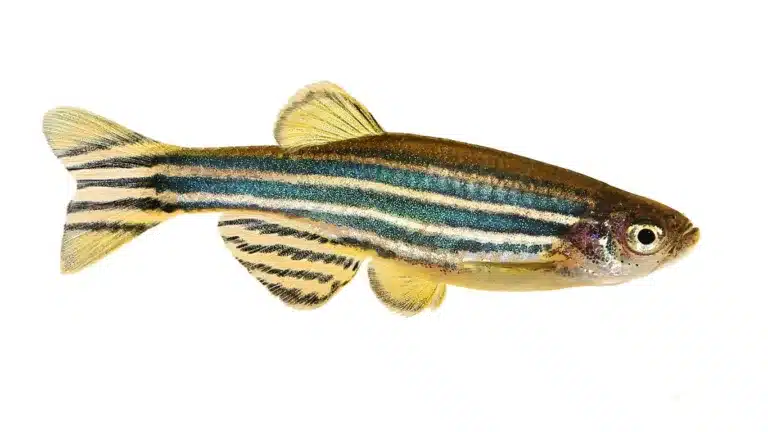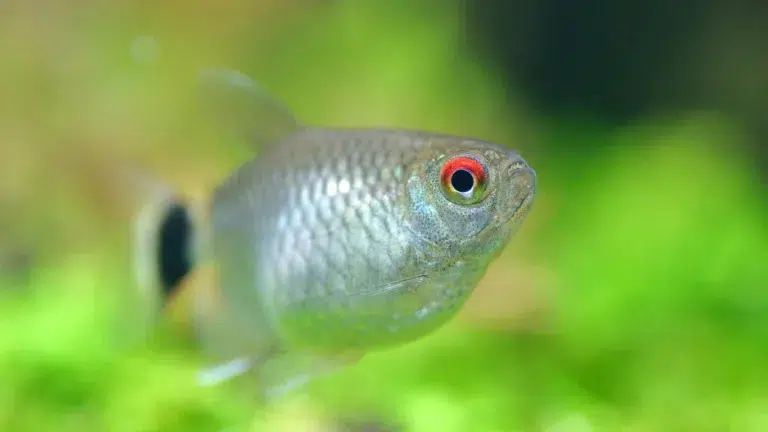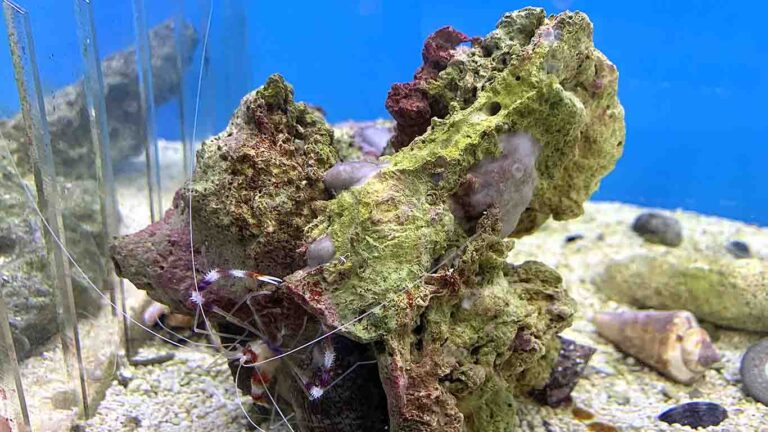Did you know that a staggering 70% of beginner aquarists make critical mistakes in their aquarium care, often avoiding mistakes in aquarium care? Maintaining a healthy aquarium can be a rewarding but challenging endeavor, especially for those new to this hobby. Without the right knowledge and guidance, these mistakes can lead to stressed and unhealthy fish, algae outbreaks, and even tank failures, emphasizing the importance of avoiding mistakes in aquarium care. It is crucial for novice aquarists to educate themselves on proper practices to ensure the well-being of their aquatic pets and the overall success of their aquarium setup.
But fear not! In this comprehensive guide, we will discuss the 21 most common mistakes that aquarists make and provide you with valuable tips on how to avoid them. By learning from experienced experts in the field, you can ensure that your aquarium thrives, your fish remain happy and healthy, and you can enjoy the beauty of a flourishing aquatic environment.
Core Insights To Aquarium Care:
Adding Fish Before the Aquarium Is Ready
One of the most common mistakes beginners make is adding fish to the aquarium before it is ready. It can be tempting to fill the tank with colorful fish right away, but this impatience can have serious consequences for the well-being of your aquatic friends.
To ensure a healthy and thriving aquarium, it is crucial to allow the tank to go through the nitrogen cycle and for the water parameters to stabilize. The nitrogen cycle is a natural process that establishes beneficial bacteria in the aquarium, which help break down harmful ammonia into less toxic substances. This cycle typically takes about 4-6 weeks to complete.
Furthermore to the nitrogen cycle, it is important to monitor and maintain stable water parameters such as pH, temperature, and hardness. Sudden fluctuations in these parameters can cause stress and illness in fish, and even lead to death. It’s important to create a suitable environment before introducing any fish to your aquarium.
Take the time to research the specific needs of the fish you plan to keep and ensure that their requirements align with the water conditions in your aquarium. This will help prevent any unnecessary harm to the fish and contribute to their long-term health.

“Adding fish too early can disrupt the nitrogen cycle and subject the fish to unstable water conditions, compromising their health and overall well-being.”
Remember, patience is key when it comes to setting up your aquarium. Waiting for the nitrogen cycle to complete and establishing stable water parameters will greatly increase the chances of success in keeping happy and healthy fish.
Key Steps to Prepare Your Aquarium
| Step | Description |
|---|---|
| 1 | Set up the aquarium, including installing the filtration system, heater, and substrate. |
| 2 | Begin the nitrogen cycle by adding an ammonia source, such as fish food or liquid ammonia. |
| 3 | Monitor the ammonia, nitrite, and nitrate levels using a water test kit. |
| 4 | Regularly perform partial water changes to maintain water quality. |
| 5 | Test and adjust the pH, temperature, and hardness of the water to ensure stability. |
| 6 | Wait for the nitrogen cycle to complete and for stable water parameters to be achieved before adding fish. |
Buying a ‘Small’ Aquarium
When it comes to choosing an aquarium for your home, many beginners believe that starting with a small or nano tank is the best option. While it may seem easier to maintain a small aquarium, opting for a larger tank can actually provide a more stable and forgiving environment for your aquatic friends.
Small aquariums typically have less water volume compared to larger tanks, which can lead to rapid changes in water conditions. These fluctuations can make it more challenging to maintain stable water parameters, such as pH, temperature, and nitrate levels. Inconsistent water parameters can cause stress to your fish and make them more susceptible to illness.
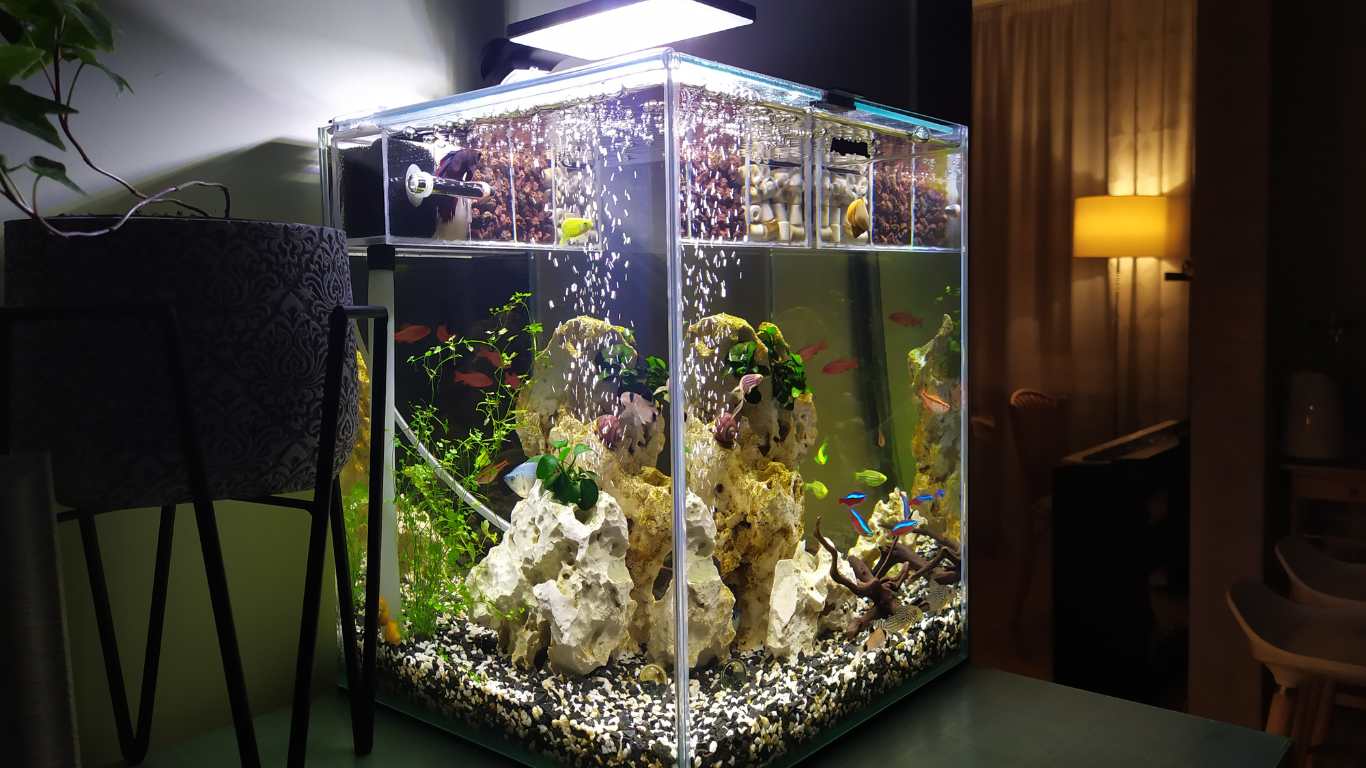
On the other hand, larger aquariums offer several benefits when it comes to water parameter stability. With a larger volume of water, it becomes easier to maintain a balanced ecosystem and ensure optimal conditions for your fish. The increased water volume provides a buffer against sudden changes, giving you more time to address any issues that may arise.
Furthermore, larger tanks allow for better control over water quality. It’s easier to manage filtration systems and maintain a proper balance of beneficial bacteria that helps break down waste and keep the aquarium clean. This can result in a healthier and happier environment for your fish.
So, while small aquariums may seem appealing due to their compact size, it’s generally recommended to start with a tank between 30 and 60 gallons for better water parameter stability. Investing in a larger tank from the beginning will provide you with a more forgiving setup that allows for easier maintenance and better control over the overall health of your aquatic ecosystem.
Pros and Cons of Small and Large Aquariums
| Small Aquariums | Large Aquariums |
|---|---|
| Compact size | Larger water volume |
| Less expensive | More forgiving environment |
| Easy to find space | Better control over water quality |
| Rapid changes in water conditions | Stable water parameter |
While small aquariums have their advantages, it’s important to consider the potential challenges they present in terms of water parameter stability. By opting for a larger tank, you can create a more stable and healthy environment for your fish, ensuring their well-being and longevity.
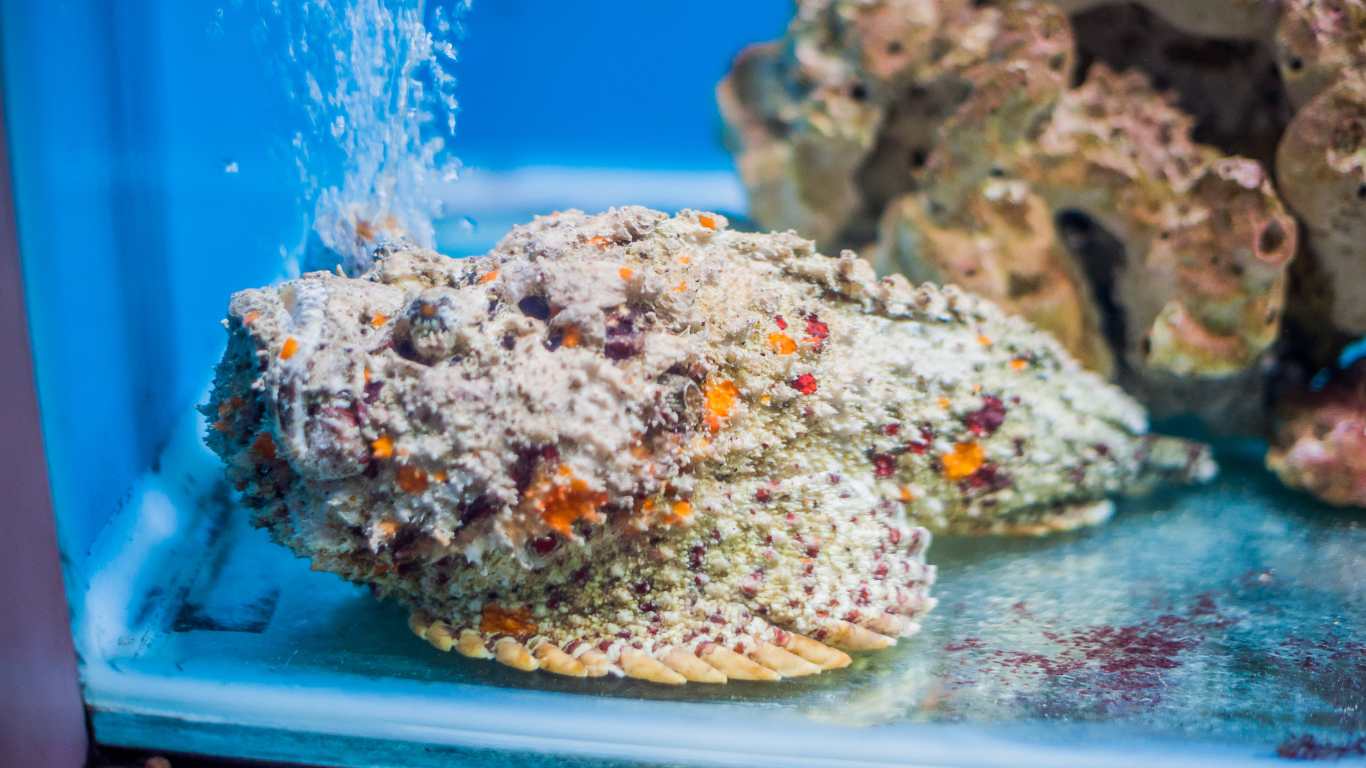
Accidental Poisoning
Accidental poisoning is an unfortunate but common occurrence in aquarium care, often resulting from the unintentional creation of toxic water conditions. As a beginner, it’s crucial to understand the factors that can lead to accidental poisoning and take appropriate measures to prevent it. Let’s explore the main causes and ways to avoid accidentally poisoning your aquatic pets.
Understanding the Nitrogen Cycle
One of the primary causes of accidental poisoning is a lack of understanding of the nitrogen cycle in aquariums. The nitrogen cycle is a natural biological process that converts toxic ammonia, produced by fish waste and decaying matter, into less harmful substances. Without a properly established nitrogen cycle, ammonia levels can rise, leading to toxic conditions for your fish.
To prevent accidental poisoning related to the nitrogen cycle, it’s important to follow proper cycling procedures when setting up a new aquarium. This process involves introducing beneficial bacteria that break down ammonia and establish a healthy nitrogen cycle. By allowing the nitrogen cycle to complete before adding fish, you can ensure a safe and stable environment for your aquatic pets.
Avoiding Excessive Feeding and Waste Build-Up
Excessive feeding and waste left in the aquarium can contribute to accidental poisoning. Overfeeding your fish leads to excess waste, which can release harmful toxins, such as ammonia and nitrites, into the water. These toxins can quickly accumulate and pose a threat to the health of your fish.
To prevent accidental poisoning from excessive feeding and waste build-up, feed your fish only the amount they can consume within a few minutes, removing any uneaten food promptly. Regularly clean the tank to remove excess waste, decaying plants, and other debris. By maintaining a clean and balanced environment, you can reduce the risk of accidental poisoning and promote the overall well-being of your fish.
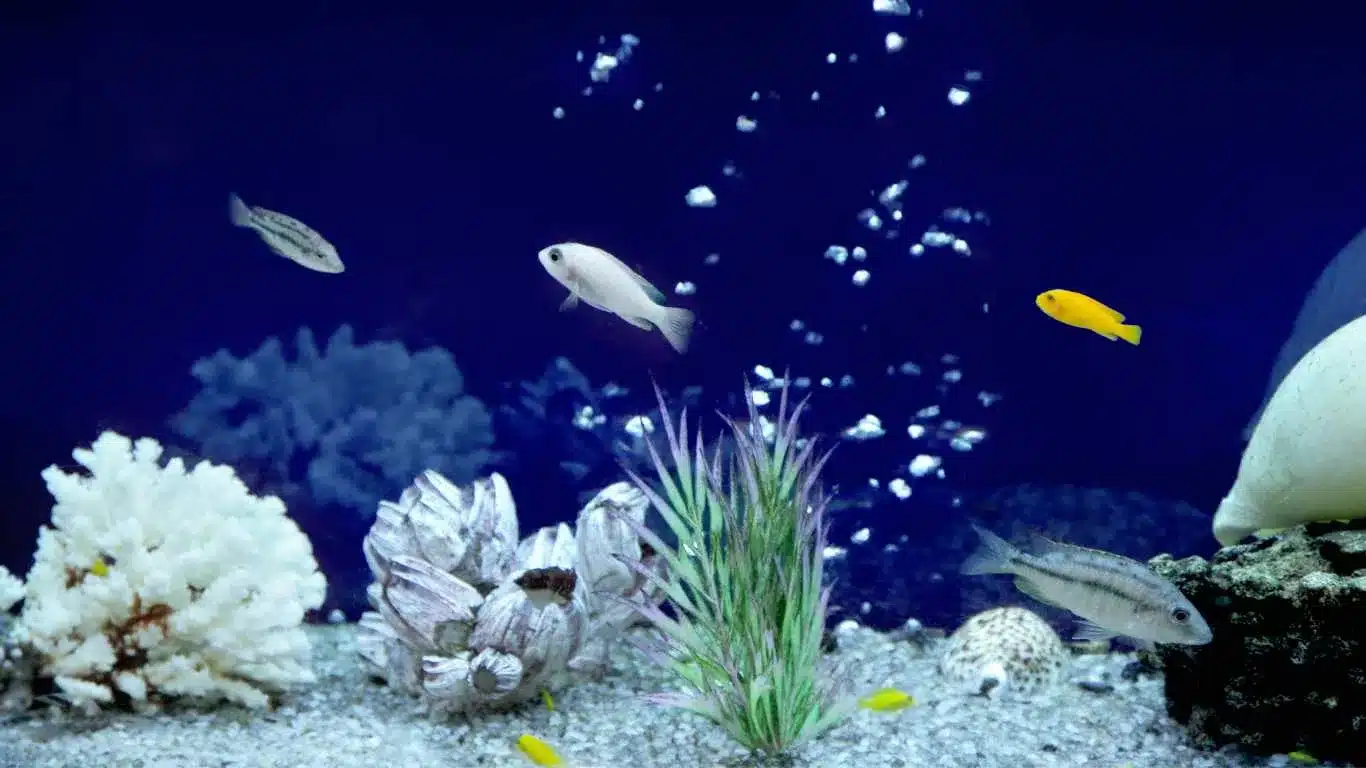
Avoiding Unnecessary Chemicals
Using unnecessary chemicals in your aquarium can also lead to accidental poisoning. Some aquarium products, such as water conditioners, medications, and algaecides, can be beneficial when used correctly. However, using them unnecessarily or in excessive amounts can disrupt the delicate balance of your aquarium’s ecosystem and harm your fish.
Before introducing any chemicals into your aquarium, carefully read the instructions and follow the recommended dosages. If possible, try to find natural alternatives, such as biological filtration and regular maintenance, to address common issues like water quality and algae growth. Taking a cautious approach when it comes to using chemicals will help prevent accidental poisoning and maintain a healthier environment for your fish.
To ensure the safety of your aquatic pets, educate yourself on proper aquarium care practices and avoid actions that can lead to accidental poisoning. By understanding the nitrogen cycle, avoiding excessive feeding and waste build-up, and using chemicals judiciously, you can create a safe and thriving habitat for your fish to enjoy.
| Common Causes of Accidental Poisoning | Preventive Measures |
|---|---|
| Lack of understanding of the nitrogen cycle | Properly cycle your aquarium before adding fish |
| Excessive feeding and waste build-up | Feed fish in moderation and promptly remove any uneaten food |
| Use of unnecessary chemicals | Read instructions carefully and use chemicals sparingly |
Not Using Live Plants
When setting up a freshwater aquarium, many beginners underestimate the benefits of incorporating live plants into their aquatic ecosystem. Live plants offer more than just aesthetic appeal; they play a vital role in maintaining a healthy and thriving environment for your fish. Let’s explore the various advantages of including live plants in your aquarium setup.
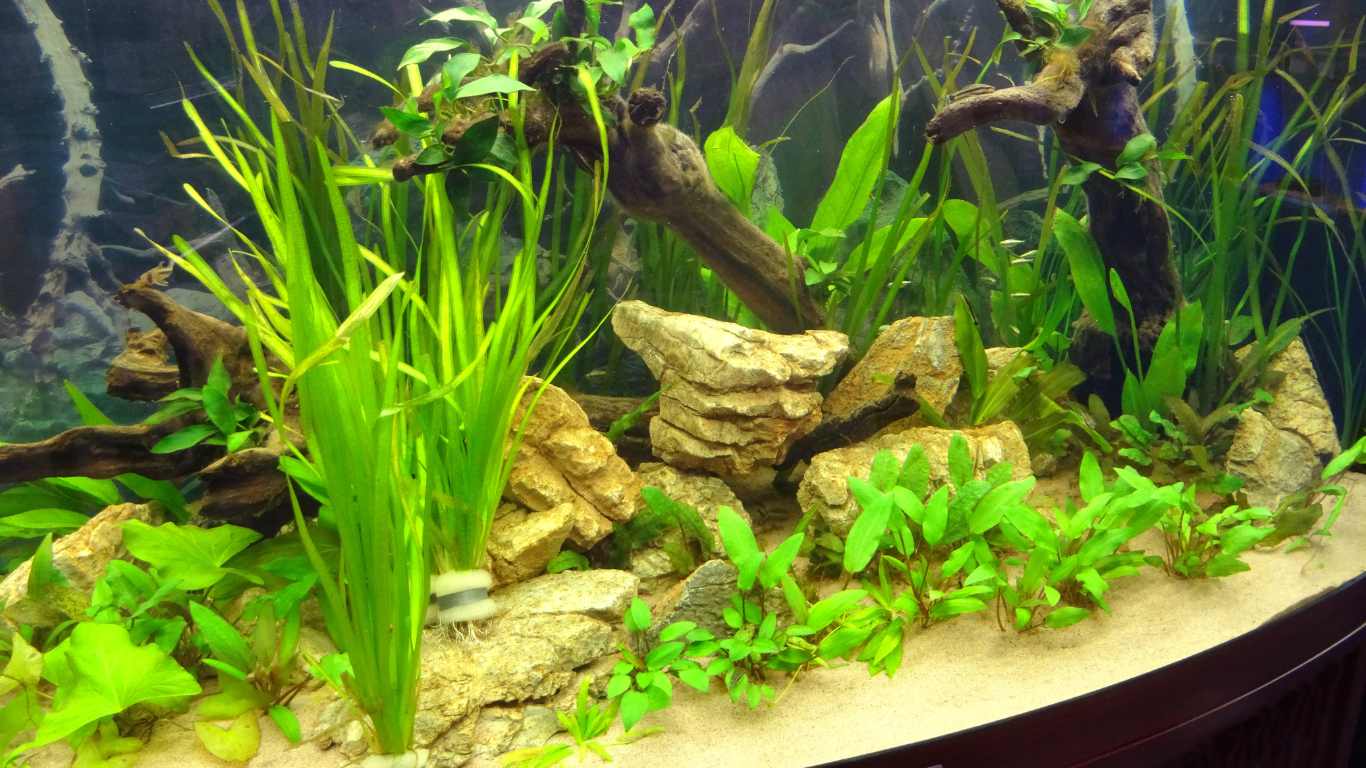
Algae Prevention through Nutrient Competition
One of the primary benefits of live plants is their ability to prevent algae growth. Algae thrive in the presence of excess nutrients, such as nitrates and phosphates, which are commonly found in aquariums. By introducing live plants that actively absorb these nutrients, you create a natural competition that limits the availability of resources for algae. As a result, algae growth is effectively minimized, allowing your aquarium to remain visually appealing and your fish to enjoy a healthier habitat.
Enhanced Water Oxygenation and Filtration
Moreover to algae prevention, live plants contribute to the oxygenation of the aquarium water. Through the process of photosynthesis, plants consume carbon dioxide and release oxygen, increasing the dissolved oxygen levels in the water. Adequate oxygenation is crucial for the overall well-being of your fish, as it supports their respiration and metabolic processes.
Furthermore, the presence of live plants promotes natural filtration in the aquarium. As plants absorb organic waste and convert harmful substances like ammonia into less toxic compounds, they help maintain optimal water conditions for your fish. By relying on live plants for filtration, you reduce the reliance on mechanical filter systems and create a more balanced and sustainable aquatic environment.
Choosing and Caring for Live Plants
It’s essential to select appropriate live plants for your aquarium and provide them with proper care. Opt for species that are non-toxic to your fish and can thrive in the specific conditions of your tank, such as water temperature, pH level, and lighting intensity. Consider factors like plant growth rate and size to ensure compatibility with your desired aquascape.
Proper care for live plants involves regular pruning, fertilization, and monitoring of water parameters. Ensure that plants receive adequate light, nutrients, and carbon dioxide through appropriate aquarium lighting, substrate, and supplement dosing. By meeting the specific needs of your plants, you enable them to flourish and fully benefit your aquarium ecosystem.
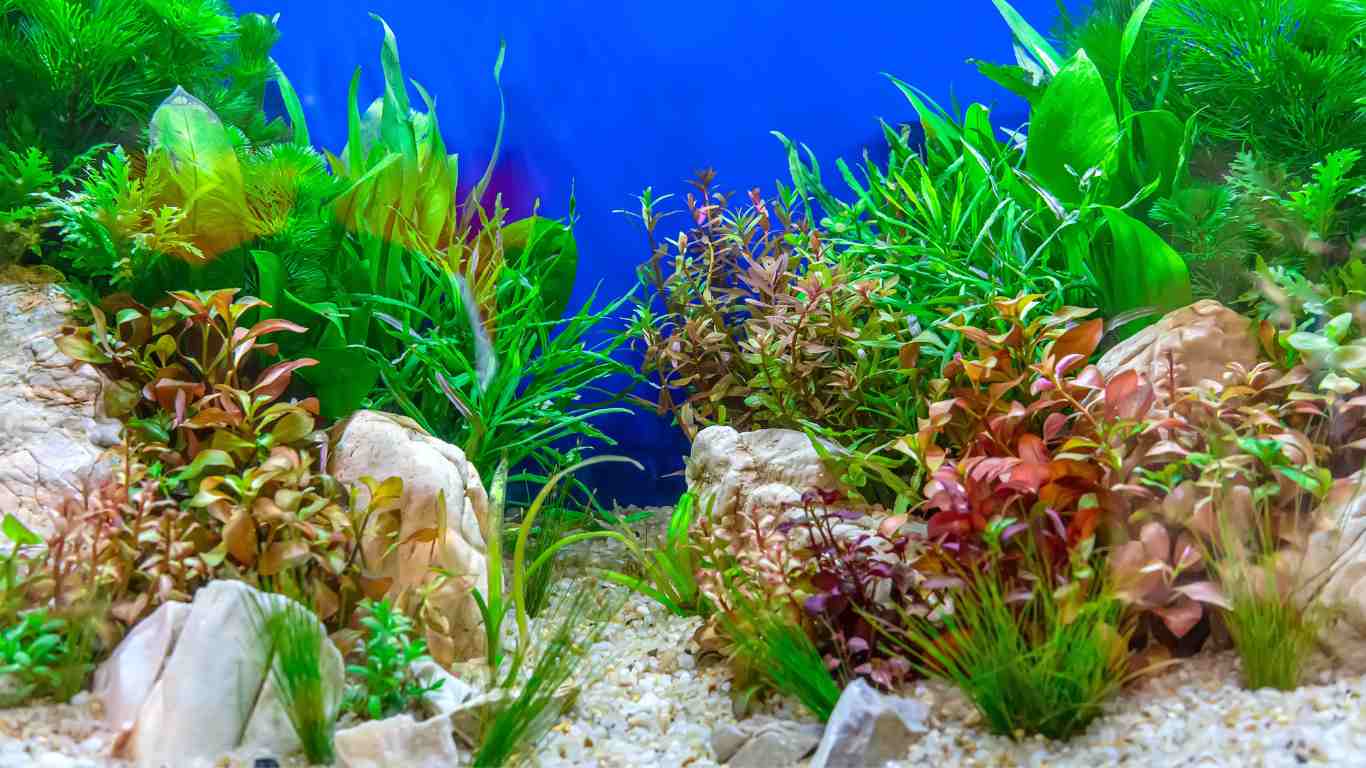
| Benefits of Live Plants in Freshwater Aquariums |
|---|
| Algae prevention through nutrient competition |
| Enhanced water oxygenation and filtration |
| Improvement of fish health and well-being |
| Creation of a visually appealing aquascape |
By taking advantage of the benefits live plants offer, you can greatly enhance the overall health and aesthetics of your freshwater aquarium. Remember to choose suitable plants, provide proper care, and enjoy the beautiful and beneficial impact they bring to your aquatic environment.
Using a Cheap Starter Filter
When it comes to maintaining optimal water quality in your aquarium, the type of filter you use plays a crucial role. Unfortunately, many aquarium starter packs come with filters that are simply not up to the task. Investing in a high-quality filter is essential for the health and well-being of your fish.
A starter filter with a low water turnover rate can spell trouble for your aquarium. The water turnover rate refers to the amount of water that passes through the filter per hour. It is recommended to have a turnover rate of at least four times per hour to ensure proper filtration.
Choosing a small or cheap filter increases the risk of under-filtering, resulting in poor water conditions that can have severe consequences for your fish. Without adequate filtration, harmful substances like ammonia and nitrites can accumulate, compromising your fish’s health and making them more susceptible to diseases.
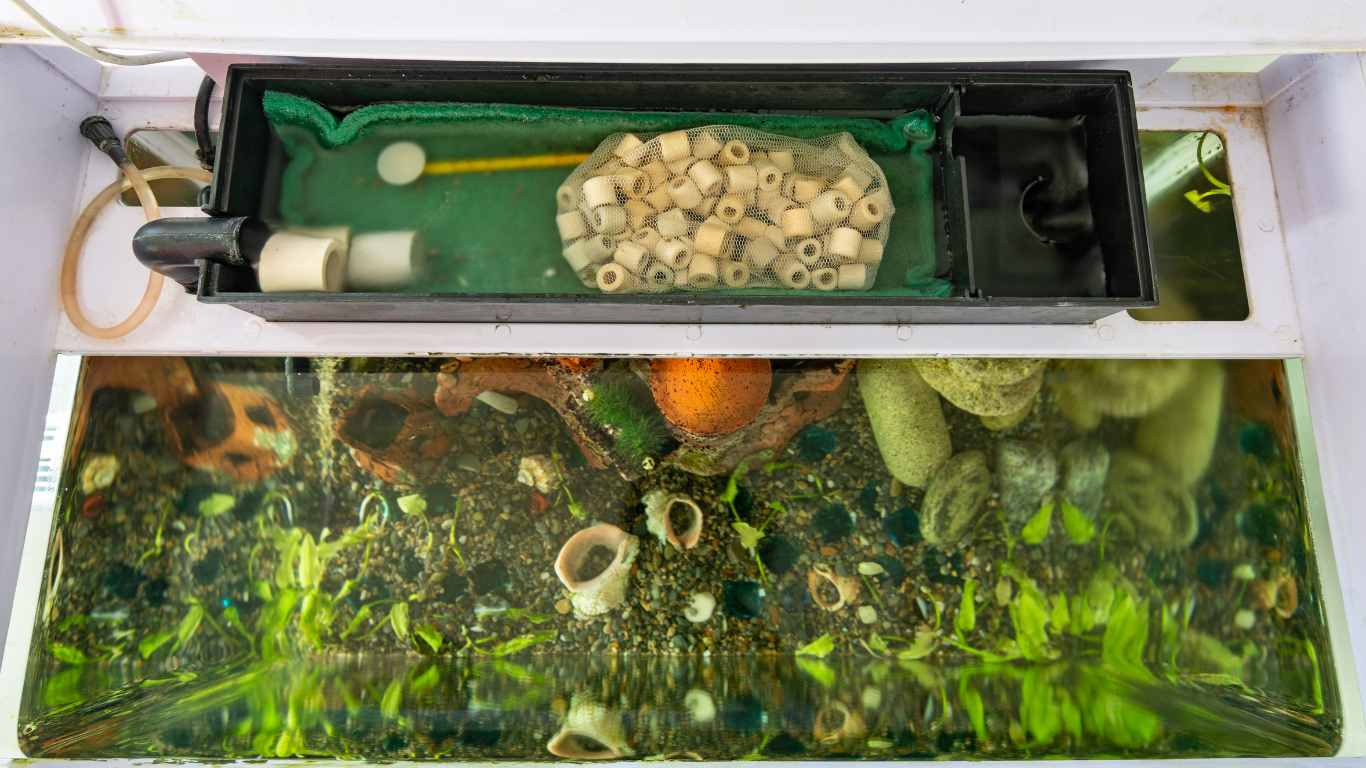
In order to maintain a healthy aquarium environment, it is better to err on the side of having a larger filter rather than a smaller one. A filter that provides proper water turnover will help to remove harmful toxins, debris, and excess waste from the water, keeping it clean and clear.
“Investing in a high-quality filter is like investing in the health and longevity of your fish. Don’t compromise on filtration!”
By investing in a filter that offers sufficient water turnover, you can ensure that your fish enjoy a clean and healthy habitat. Regular maintenance and cleaning of the filter will help to maximize its efficiency and effectiveness.
Remember, a cheap starter filter may seem like a cost-effective solution at first, but it can lead to significant issues down the line. Don’t take any shortcuts when it comes to your fish’s well-being.
Not Routinely Testing the Water
Regular water testing is essential for maintaining a healthy aquarium, especially in the early stages. By monitoring the water parameters, you can ensure that the conditions are optimal for your fish to thrive. The key factors to test for include pH levels, ammonia, nitrites, nitrates, and water hardness.
For new aquariums, it is recommended to test the water daily to closely monitor any fluctuations. This is crucial because newly established tanks are more susceptible to rapid changes in water quality. By testing regularly, you can catch any issues early on and take corrective measures to maintain a stable environment for your fish.
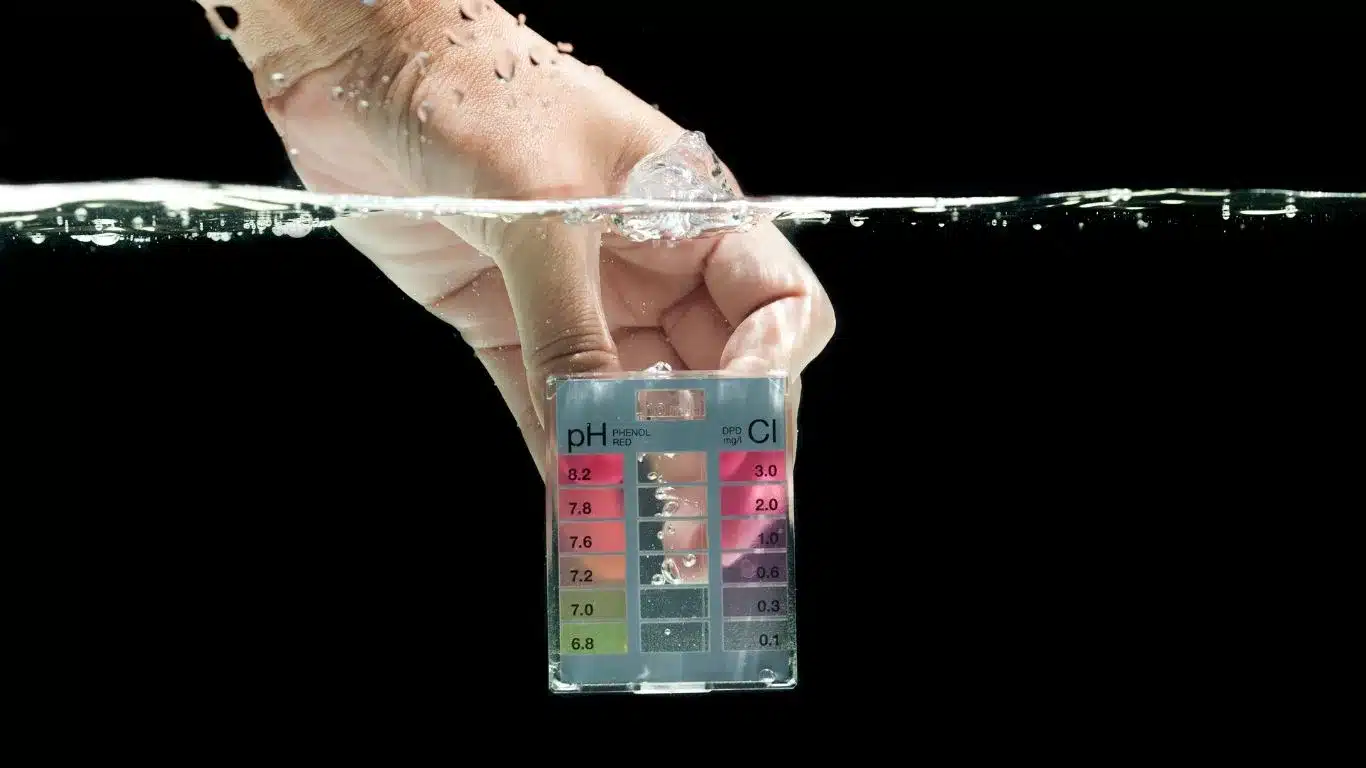
Once your aquarium is established and stable, testing on a monthly basis is generally sufficient. This allows you to keep a close eye on the overall water quality and detect any changes that may indicate a problem.
Why is water testing important?
Water testing provides valuable information about the health of your aquarium and the well-being of your fish. Let’s take a closer look at what each parameter reveals:
- pH levels: pH measures the acidity or alkalinity of the water. It is important to maintain the correct pH range for your specific fish species, as different species have different pH preferences.
- Ammonia: Ammonia is a toxic substance produced by fish waste, uneaten food, and decaying organic matter. High levels of ammonia can be harmful and even fatal to fish.
- Nitrites: Nitrites are byproducts of the nitrogen cycle in the aquarium. Elevated levels of nitrites indicate that the beneficial bacteria responsible for converting ammonia into less harmful substances are not functioning properly.
- Nitrates: Nitrates are the final byproducts of the nitrogen cycle. While nitrates are less toxic than ammonia and nitrites, high levels can still negatively impact fish health and contribute to algae growth.
- Water hardness: Water hardness refers to the mineral content in the water. Some fish species have specific hardness requirements, and maintaining the appropriate levels is crucial for their overall health and well-being.
By regularly testing these parameters, you can ensure that your fish are living in a healthy and stable environment. Water testing also allows you to identify any potential issues before they become serious problems. For example, if a fish unexpectedly dies, testing the water can provide insights into the cause and help you take appropriate action.
Make sure to use reliable water testing kits that provide accurate results. Follow the instructions carefully and record the results for future reference. By staying vigilant and proactive in testing your aquarium water, you can provide the best possible care for your fish and ensure their long-term health and happiness.
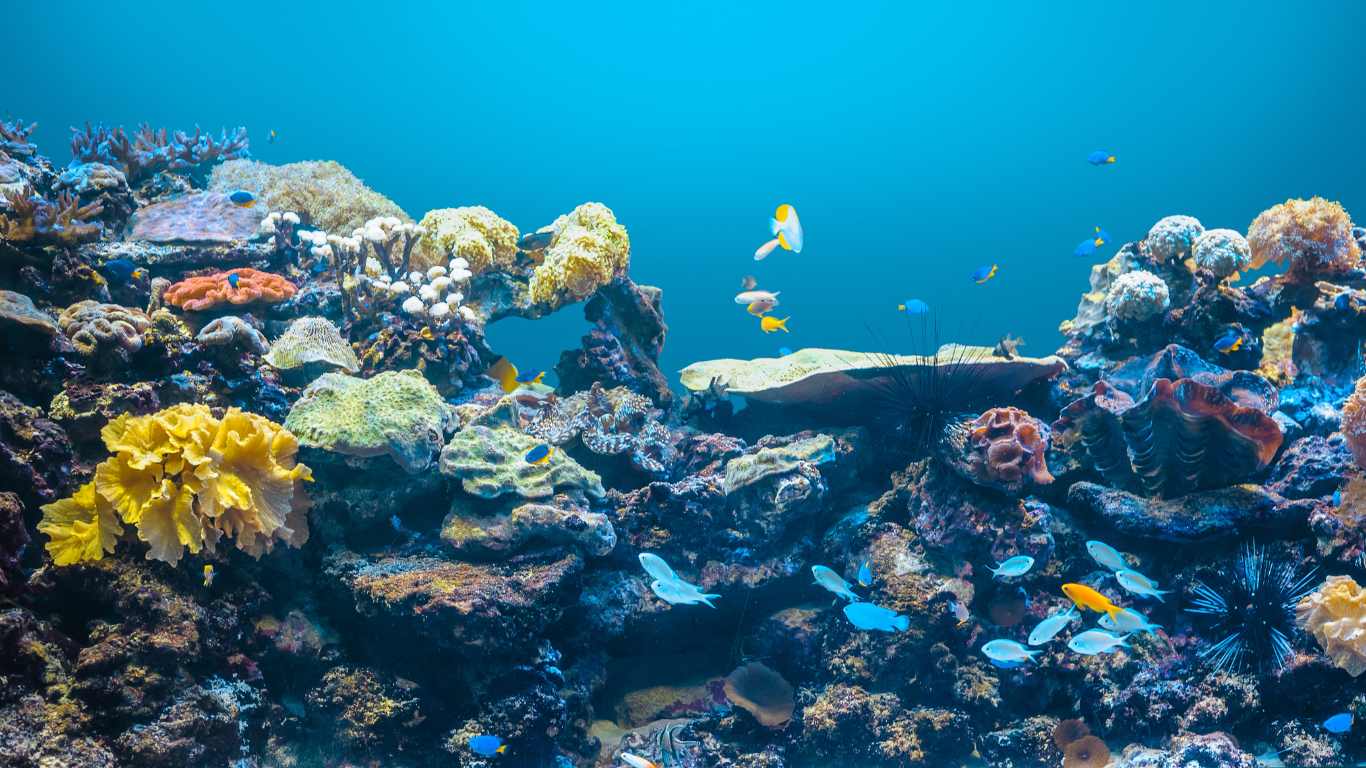
Recommended Water Parameter Ranges
| Parameter | Ideal Range | Acceptable Range |
|---|---|---|
| pH | Varies by fish species | Depends on fish species, but generally 6.5-8.5 |
| Ammonia (NH3) | 0 ppm | 0-0.25 ppm |
| Nitrites (NO2) | 0 ppm | 0-0.25 ppm |
| Nitrates (NO3) | 0-20 ppm | 0-40 ppm |
| Water Hardness | Varies by fish species | Depends on fish species, but generally 4-12 dH |
Adding Too Many Fish
Similar to adding fish too early, adding too many fish to the aquarium at once can cause problems. This practice can destabilize the water chemistry and disrupt the nitrogen cycle, leading to poor water quality and stress for the fish. It is recommended to add up to three fish at a time and wait until the nitrogen cycle is complete before adding more. Taking a gradual approach to stocking your aquarium will ensure the well-being of your fish and maintain a stable environment.
Overstocking an aquarium can have detrimental effects on both the fish and the overall health of the aquatic ecosystem. When there are too many fish in an aquarium, the water becomes overcrowded, resulting in increased waste production and higher levels of ammonia, nitrites, and nitrates. This excess waste can lead to water chemistry destabilization and poor water quality.
To maintain a healthy aquatic environment, it is important to understand the concept of the nitrogen cycle. The nitrogen cycle is a biological process that converts toxic ammonia into less harmful substances through the growth of beneficial bacteria. Introducing too many fish at once overwhelms the existing population of beneficial bacteria, disrupting the nitrogen cycle and causing ammonia spikes.
To avoid these issues, it is best to add fish gradually to your aquarium. Start by adding a small number of fish, typically no more than three, and then monitor the ammonia, nitrite, and nitrate levels. Waiting until the nitrogen cycle is complete and stable before adding more fish will help ensure that the water chemistry remains balanced and the fish can thrive.
Furthermore to preventing water chemistry destabilization, gradually stocking your aquarium allows you to observe and monitor the behavior and health of the fish already present. This provides an opportunity to address any issues that may arise before introducing new fish.
Remember, the well-being of your fish should always be the top priority. By taking a cautious and gradual approach when adding fish to your aquarium, you can create a harmonious and thriving aquatic environment.
Join the Pet Planet Diaries
Sign up for our newsletter to get the latest tips, stories, and exclusive insights into the wonderful world of pets.
Final Remarks
Avoiding mistakes in aquarium care is essential for creating and maintaining a thriving aquatic environment. By learning from common mistakes and implementing best practices, you can ensure the health and happiness of your fish while enjoying a beautiful aquarium.
To achieve optimal aquarium care, it is important to provide a stable environment for your aquatic pets. This includes allowing the tank to go through the nitrogen cycle and ensuring stable water parameters, such as pH, temperature, and hardness. By establishing these conditions before adding fish, you can prevent stress, illness, and death in your aquarium.
Proper maintenance of water quality and chemistry are also crucial. Regularly testing your water for pH levels, ammonia, nitrites, and nitrates can help you identify and address any potential issues. Avoiding overstocking your aquarium and making informed decisions about filter selection will further contribute to water stability and fish health.
By following these best practices, you can create an optimal aquarium environment for your fish. With the right knowledge and practices, you are well on your way to enjoying a successful and rewarding aquarium hobby.
FAQ
What is the most common mistake beginners make in aquarium care?
One of the most common mistakes beginners make is adding fish to the aquarium before it is ready. It is important to allow the tank to go through the nitrogen cycle and for the water parameters, such as pH, temperature, and hardness, to stabilize.
Is it better to start with a small or large aquarium?
While it may seem easier to start with a small aquarium, it is generally recommended to start with a tank between 30 and 60 gallons. Small aquariums have less water volume, which can cause rapid changes in water conditions and make it more difficult to maintain stable water parameters.
How can I avoid accidentally poisoning my fish?
It is surprisingly common for beginners to unintentionally poison their fish by creating toxic water conditions in the aquarium. This can occur due to a lack of understanding of the nitrogen cycle, excessive feeding or waste left in the tank, and the use of unnecessary chemicals. It is important to educate yourself on proper aquarium care and avoid practices that can harm your aquatic pets.
Why should I incorporate live plants into my aquarium?
Many beginners overlook the benefits of incorporating live plants into their freshwater aquariums. Live plants help prevent algae growth by competing for the same nutrients, providing a natural solution to this common problem. Additionally, live plants help oxygenate the water, creating a healthier environment for the fish.
What kind of filter should I use in my aquarium?
Aquarium starter packs often come with filters that are inadequate for maintaining optimal water quality. It is important to invest in a filter that provides sufficient water turnover, ideally at least four times per hour. Under-filtering can lead to poor water conditions, compromised fish health, and increased susceptibility to diseases.
How often should I test the water in my aquarium?
Regular water testing is essential for maintaining a healthy aquarium. For new aquariums, daily testing is recommended, while established aquariums should be tested on a monthly basis. It is important to monitor pH levels, ammonia, nitrites, nitrates, and water hardness to ensure that the water parameters are within the appropriate range for your fish.
Is it okay to add a lot of fish at once?
Adding too many fish to the aquarium at once can cause problems. This practice can destabilize the water chemistry and disrupt the nitrogen cycle, leading to poor water quality and stress for the fish. It is recommended to add up to three fish at a time and wait until the nitrogen cycle is complete before adding more.
How can I ensure the best care for my aquarium?
Avoiding mistakes in aquarium care is crucial for maintaining a thriving aquatic environment. By understanding and avoiding the common mistakes discussed in this comprehensive guide, you can create an optimal aquarium setup and ensure the health and happiness of your fish.

